Here we go! LCQ is only about two and a half days away as I write this, so if you’re a Pokemon VGC player and your adrenaline isn’t pumping, I suggest seeing a doctor. We’re in for the most competitive Worlds we’ve ever seen this year. The Championship Points system has helped us achieve a Worlds field from a variety of countries that has many, many more players that are truly at a world-class skill level than ever before. It was extremely difficult to qualify in most of the world this year, so difficult that only two of the players out of the six from top 8 last year were able to earn an invitation back. Replacing last year’s field is a new group of players that are more practiced than ever before and eager to take over those spots in the top cut.
The 2013 field as a whole is really fascinating this year in a way that will make the tournament exciting and unpredictable. Typically with Worlds, in spite of the tournament’s prestige, the tournament winds up with about about 10 of the 40 players being much more skilled than the rest, and it is typically fairly easy to discern who those players are early in the tournament. I don’t think the usual scenario will take place this year, as the pool of players I’d put it in the elite class of players who have a good shot of making top cut without having to have the tournament of their lives is at about 20 players, with probably another 10 who could definitely make it if they get hot this weekend. That only leaves about 10-15 players who I think would be really crazy to expect to cut this time, and I’ve certainly been wrong before… while this Worlds field still isn’t the best 45 players in the World, it’s the closest it’s ever been this year, and it’s going to be a really tough road for everyone because of it.
With 6 rounds and about 45 players, players are going to need at least four quality wins to make into top cut, either getting four wins over stronger opponents in harder rounds of the tournament and one weaker win, or four really quality wins with two really quality losses to make it to the top 8. Outside of probably Australia(sorry!), every country has a few players who are viable top cut threats, and most countries have several. With with the magic of random pairings, surviving the Swiss rounds is going to involve the Russian roulette of avoiding top players as often as possible, but after about the second round I don’t think there’s going to be any easy matches left for anyone who is still in contention. I’m going to give an overview of all of the players in the tournament, because as the best players in their countries, the players have earned that respect, and we’ll follow up the overview with some predictions from players in the field.
The Players
-
![flag_australia]() Australia
Australia
With the dates of Regionals being announced so close to their arrival that the time Australians players had to practice this season could be measured in days instead of months or even weeks, and because of the absence of Australian events in the past, it is understandable that Australia has the lowest expectations of any country entering the tournament.
Australia tends to be pretty insular in regard to the VGC community they do have — perhaps even more so than the playerbases of countries you’d expect to be insular because of language barriers — and with no previous Worlds performances to speak of, there isn’t too much from Australia to write about. What little we do know of the Australian players and their Pokemon choices largely come from the teams they used at Nationals, which understandably look like teams you’d find in a US Regional or European National tournament from about 2009. Australia seems to look about how it would be expected a region that got its first meaningful official events a month and a half ago should look. It’d be hard to imagine either of their players even finishing with a positive record as a result, but hopefully the Australian players enjoy themselves and learn a bit from the experience so that they can come back more practiced in 2014.
Australia’s champion is Ben K., who ran a Rain team featuring some original choices like Sporeless Breloom and Toxic Politoed to win PAX. Australia’s other representative is PAX runner-up Hugh R., who used a team that was awfully aggressive, but that appeared to be much more appropriate for the rest of the World’s metagame outside of the surprising use of Air Balloon, which may help him do a little better than his countryman on the bigger stage. While the odds are definitely stacked against the Australian competitors, hopefully they surprise us a little. It’s exciting, at least, that VGC finally has some amount of foothold in Australia.
-
![flag_canada]() Canada
Canada
The first nation other than the United States to hold a VGC Worlds sadly doesn’t have quite the volume of representation one might hope for given its single representative. With Canada’s Nationals being merged back into the United States’ Nationals after a poor turnout last year, Canadian players had to compete with players from the United States for only a dozen spots. As a result instead of two representatives like last year this year Canada sends only Randy Kwa (R Inanimate) on a journey from his hometown of Vancouver to battle in the World Championships in distant Vancouver. What Canada lacks in volume Randy makes up for in skill, and I think Canada’s still long odds are a lot better this year than last year after qualifying the nation’s best player. I think Canada is one of the better examples of why CP works, because while I love all of the Canadian guys, I don’t think there’s many people that would dispute that Randy is the best player in the country and one tough loss against a bad matchup kept him out of Worlds last year.
With the LCQ in Vancouver, Canada will get one last chance to send some local talent into the field on Friday. Both of the 2012 Canadian National finalists, runner-up Mike Papagianis(skarm) and champion Tony Cheung(Chinese Dood), will be in attendance and among the greater threats to make it through LCQ
-
![flag_france]() France
France
France isn’t a country that has traditionally had many VGC players, but every year France seems to send one or two players to Worlds. In 2011, France sent two players, who finished 3-3 and 2-4. In 2012, France sent only Bryan Martinet, who finished 2-4. This year, France sends only Nabil Lakehal, who finished in the top 16 of Germany after being eliminated by Lorenzo Galassi. The precedent would indicate that the French player will finish a little below the midpoint of the field, but Nabil will have to try to buck the trend and become the first French player to finish Masters Swiss with a winning record.
![flag_germany]() Germany
Germany
France isn’t the only country trying to get its first winning record in the Masters division, but the odds are much brighter for Germany. While Germany has been one of the most consistent European countries as far as taking many of the European invitations and sending players to Worlds, 3-3 has been a difficult bar for the German players to get over, and a German player has only had a winning record once in Worlds, during 2012 Seniors, since Swiss was adopted in 2009. Last year, Germany sent seven players to Worlds, with five of them finishing 3-3. In 2011, Germany sent four players, with two finishing at 3-3. Germany has been very consistent as far as sending Worlds-ready players to the tournament every year, sending more than any other European country in Generation 5, but Germany has never seemed to have that star player that actually gave them a realistic shot at winning the tournament like Italy has in Matteo Gini or Spain has in Abel Sanz.
With Germany earning more invites than any country but the United States, there’ll be no shortage of players trying to become that star for Germany this year. Germany’s highest finisher as far as overall Championship Points was Michael Riechert(Michilele), who is back in Worlds with a chance to prove that he’s better than he was last season, when he made Worlds but finished 30th of 33 players. Two of Germany’s better bets this year are younger players in Eloy Hahn(Dragoran5) and Jamal El Moutaoikil (Toazdt). While both players are in their first year in Masters, each of them managed to finish 2nd in a National tournament this year. One other thing they have in common is that they made it to Worlds in the last year of Seniors, where they also finished 3-3. Next in line for CP is Matthias Hellmoldt, who made it to the semifinals of the Italian tournament. Matthias Suchodolski (Lega) top cut two European Nationals this year, finishing in the top 8 of the UK to win the trip after losing in the round of 16 in Italy.
The next German in order of Championship Points is Lajos Kowalewski (Lajo), who sadly is unable to make it to Worlds and meet his hordes of screaming American Sun team fangirls. Lajos’ top 16 opponent Stefan K (Maunzi) is next after him on the CP list, followed by Steven V. (Akatsubaki). The German squad is rounded out by two community fixtures in Barış Akcoş (Billa) and veteran Christoph Kugler (drug duck), who is returning to Worlds for the first time since his 24th place finish in 2009.
Germany also provides one of the more interesting LCQ storylines with Markus Stadler (13Yoshi37) and Marcel Kapelle (Massi) entering the LCQ. In a year where few players in the LCQ have appreciable Worlds experience, these two stand out as likely options to make the actual tournament, with Markus finishing 3-3 in 2012 Worlds and Marcel finishing 16th in 2009.
-
![flag_italy]() Italy
Italy
Italy is a strange country in the world of Pokemon. There never seem to be too many Italian players, with the relatively small Italian Nationals this year serving as a reminder of that fact. The players Italy does have are somehow still among the best in the world, something that was brought to light by two Italian players making top cut in 2011 Worlds. I think to many people, Italian VGC is just the Matteo Gini (Matty) show because of his second place finish that year. He’s certainly earned the notoriety of being known as Italy’s best player, as well as perhaps the best player in all of Europe, after winning Italian Nationals this year and finishing 2nd in Worlds and Italian Nationals in 2011.
However, I think that Italy’s progress is evident in the group of players being sent this year, which once again includes some players who are plenty capable of fighting for top cut slots beside Matteo. Perhaps the most famous is his brother Alberto Gini (BraindeadPrimeape), who added to the family legacy by being the top European finisher in one of the Wi-Fi tournaments and winning German Nationals. Luigi Lo Giudice finished in the top 4 of that tournament, and Arash Ommati (Mean) getting to play in Worlds is one of the obvious bright spots of Europe’s invites getting expanded past 16. I’m not sure whether or not Lorenzo Galassi (Greyfox) or Carlo Arbelli (shinycarletto) are actually attending Worlds, but the four players we do know are going are all good enough that Italy may wind up being one of the only nations that can say all of their participants have a legitimate chance of making top cut.
-
![flag_japan]() Japan
Japan
Once the most feared nation in Pokemon, Japan’s Pokemon players have fallen on hard times during Generation 5. With more than twice as many Japanese players in 2010 competing in the top division(10) as Japan will have in Masters in 2011, 2012, and 2013 combined before LCQ (4), the Japanese players just haven’t been given the same opportunity to perform they were given back in Generation 4. Between 2008 and 2010, eight of the twelve players who made it to top 4 in the highest division of VGC were Japanese, a legacy that should remind players how strong the playerbase in Japan can be. While Japan’s bizarre qualification system has restricted the ability of some top players to even have the chance to compete, Japan will once again be sending a pair of strong competitors to Worlds who will try to at least match the success Junpei Yamamoto had last year when he secured an 8th place finish for Japan.
Japanese Champion Kosuge Ryosuke is well-known enough that most of us had heard of him prior to Nationals in spite of him earning his first Worlds invitation this year. If reputation is any indication of ability, he’s likely to be one of the more threatening players in the field this year. His team had some eccentric metagame choices that I know a lot of people were a little surprised about when we saw his team, particularly Iron Ball Sunny Day Tyranitar. While the choices Kosuge made may not have been the choices I would have made either, I think the choices he made were understandable to counter some of the threats that were likely to be popular in Japan’s National tournament. Matsumoto Yuki played on stream for three rounds during Japan’s Nationals, giving the world a good look into his playstyle. I think a lot of us were a little surprised to see such a hard Trick Rain team do so well, but he made it to the finals of the tournament, and that’s what he needed to do.
Since my ability to research the Japanese players going to Worlds for LCQ is completely dependent on Google Translate, I enlisted recently impoverished Nugget Bridge Japanese correspondent Danny Zollner(Dan) to ask the tough questions about Japan’s LCQ roster after hearing rumors that Japan is sending somewhere between 20 and 2,000 players to Worlds. After speaking with the highest profile Japanese LCQer, his friend and 2012 Japanese National Champion Satoru Masukata(huuuryu), Danny reported back that outside of Satoru, there weren’t really going to be any players that are internationally known. He mentioned that many of the players were “Japan-internally known”, but not even too well known at that. Specifically, that “it’s like saying pookar is going to Worlds. Nobody in Japan knows or cares.” Even without a bunch of big names in the LCQ, the 20-30 players actually coming from Japan are likely to be pretty threatening. While most of the other major regions have sent most of their better players to Worlds already because of the Championship Point system, Japan has not been so fortunate, and the LCQ is the last opportunity for them to even the odds a little in the real tournament.
-
![flag_korea]() South Korea
South Korea
While South Korea is only sending one player, I don’t think it’d be much of a stretch to say that if you were to weigh the odds of each country in the tournament producing the world champion, Korea’s odds would still be among the best. While Korea is criminally underrepresented in Worlds like Japan, Sejun has established his place as one of the top few players in the world. Sejun is part of the elite group of players who qualified for each of the three Generation 5 Worlds tournaments, finishing second in Seniors in 2011, earning him an invite to the 2012 Worlds where he finished 5th in Masters. While Sejun is all there is for Korea in Masters this year, he’s probably the competitor the other players most expect to see in top cut because of his sterling record and skills. While Sejun is younger than most of the tournament’s other big threats, he’s got a great combination of all the skills you need to be successful in this game, and if you’ll scroll down you’ll find there’s no shortage of coverage about him..
-
![flag_spain]() Spain
Spain
Spain is the traditional European VGC powerhouse. While they always seem to create their fair share of controversy, Spain has risen as a consistent contender in VGC and is the only country other than the United States to have a player in top cut of Masters in both 2011 and 2012. One of the players who helped make this happen is Abel Sanz (Flash), who inexplicably doesn’t receive an invitation to Worlds for his top 4 finish last year, but managed to finish second at a hotly contested UK National tournament to earn his trip to Vancouver. Finishing second in CP for the Spainiards somewhat surprisingly is the excitable Albert Bañeres (Arbol Deku), who is the only Spaniard other than Abel and Jordi Picazo to win a trip this year. Jaime Martinez Alonzo makes his Masters Worlds debut after qualifying from an impressive run in Seniors Worlds last year, who may have a tough time adjusting after not getting to have quite the same amount of play in Masters yet as some of his fellow graduates have had. The unpaid invites in Spain all went to pretty well known players in Jose Garcia Mejia, Miguel Marti de la Torre (Sekiam), and Javier Bellanco (bellanko). All three of them finished in the middle of the pack this year, but Jose and Miguel played in Worlds last year and went 2-4 and 3-3, respectively, so they’ll bring some experience if they’re able to attend.
-
![flag_uk]() United Kingdom
United Kingdom
It seems we never know quite what we’re going to get from the UK. Good for only a DQ and a 3-3 finish in 2010 and three players who combined to go 4-13 and a bye in 2012, it’s easy to overlook that Daniel Nolan (Zog) was one of the first Europeans to make it to the top cut in 2011. After serving a short suspension, he’s back to Worlds this year, and he’ll be getting much more help this time. After a lackluster 1-5 showing in 2012 Worlds, Ben Kyriakou(Kyriakou) looks like a completely different player this year, top cutting two Nationals, including completely decimating his home National in the UK. His buddy Barry Anderson (Baz Anderson) is certainly also a growing name on the scene, winding up by far as the player with the most CP in Europe who didn’t win a trip. Lee Provost (Osirus) sort of quietly wound up fourth in European CP, and while he never seems to get the hype some of the other players who finished even below him do, there’s an awful lot more players behind him than in front of him this year. Christopher Arthur (Koryo) rounds out the list of more well-known players by finishing 15th with a pair of top 16 finishes. For the most part, the rest of the UK players – Rachel Annand (SPEevee), Benjamin G (Ben91293), Rina Purdy, and Sol64 — are a little less established, but since most or all of them will be attending Worlds they’ll have a great opportunity to make more of a name for themselves.
-
![flag_usa]() United States
United States
Aaron and Wolfe did a good job of previewing the qualified American players in their write-up, so I’d check out their work for info on the players already in the field.
As far as the LCQers: it’s no secret that the United States has dominated the LCQ slots in the past, always taking most of the available slots. Worlds taking place in the United States in the past meant most of the players playing have been from the United States, and traditionally many of the best players in the United Sates have not had their invitations when Worlds rolled around. Both of those factors change this year, with Worlds in Vancouver and most of the best American players who actually played full seasons qualified for Worlds already outside of the bizarre case of Simon Yip (TDS) missing Worlds because Wi-Fi Claus put him on the naughty list. The most dangerous player in LCQ from the States will definitely be 2011 and 2012 Worlds Top Cut participant Matt Coyle (PrettyLittleLiar) in spite of his weak 2013 season, who will hopefully lose in the last round so he can join Enosh and I in the extremely prestigious “choked the chance of making Worlds all three years of Generation 5 by one game” club. Duy Ha (Duy) is the 13th place finisher in CP and someone who will be very dangerous if he’s actually trying, with the next highest rated players in LCQ as far as CP being Tiffany Stanley (Shiloh) and Nico Villalobos (Calm Lava). Other dangerous players include people who who have made Worlds in past years like Jason Fisher-Short (Fish), Paul Hornak (makiri), and Huy Ha (Huy), as well as some newer names like Oliver Valenti (Smith), Tom Hull (TheGr8), and Blake Hopper (Mrbopper). With most of the best players already in Worlds and a majority of the remainder in Simon, Harrison Saylor (Crow), and Joe Pulkowski (sandman) not attending Worlds, the door to the LCQ is going to be open for the rest of the world this year.
Predictions
Like with US Nationals, we’ve asked a variety of players to give their thoughts on who they think will come out on top of the tournament! Joining us this time is a group of players who will be competing in Worlds: Lee Provost (Osirus) and Barry Anderson (Baz Anderson) from the UK, Arash Ommati (Mean) from Italy, Christoph Kugler (drug duck) from Germany, and Aaron Zheng (Cybertron) and I (Scott) from the United States. Once again, everyone was asked to stick to 2-3 paragraphs, a concept we continue to be confused about the meaning of.
- Lee Provost (Osirus)’s Predictions
Going into the week before the World Championships is set to hit the global stage, it’s time to get the hype train started and take a look at the competitors representing this year’s field. Picking the eight players I think will top cut from such a strong field this year was actually so much more difficult than I initially thought it was going to be when first approaching this article. I may have went a little safe in the end with my predictions, but I feel they are all well-justified and please don’t be to offended if you‘re not mentioned.
Top 8: Ray Rizzo (Ray), Sejun Park, Abel Sanz (Flash), Ben Kyriakou (Kyriakou), Enosh Shachar (Human), Wolfe Glick(Wolfey), Matteo Gini (Matty), Gavin Michaels (kingofkongs)
Enosh Shachar, the runner-up at the recent US Nationals, showed his intuitive and original teambuilding skills alongside his ‘do-or-die’ playstyle that make him what you can call a very “solid” player. With his ability to read games unlike most players combined with his playstyle to close games in the first few turns and to be able to swing a match in a clutch situation, I think it will be no surprise to see Enosh in top cut. I personally haven’t seen much of Wolfe Glick this year, but from being a two-time US National Champion and the way in which he topped Worlds with Ray last year, I would not be surprised to see his name in lights again this time around in top cut. At the very least, it will be very interesting to see what he brings to the field this time around. Gavin Michaels is the 2013 US National Champion, a very strong player, and the level of prediction skills he showed while obtaining this title really showed what a top class contender Gavin really is. I think his recent success will only spur him along to even more at Worlds and carry him very deep within the tournament.
My top pick from Spain is Abel Sanz. From playing him this season and after his amazing accomplishment at Worlds last year, he is definitely a player that cannot be left off this list. In my opinion, he is as good as they come, and even if he doesn’t seem to have the natural ability that some players posses I think he makes up for this in his work ethic, intelligence and the effort he puts into his team and game. It will be interesting to see what he brings to the table at this year’s event. We all know he loves his Metagross, and there’s no doubt he will have a few tricks up his sleeve to bring into this event, but whatever he ends up playing, he’s just one of those players that on his day can perform as good as anyone.
Matteo Gini, the Italian Stallion and one of Europe’s finest players. Matty’s ability to be one of the most consistent players worldwide alone will give him success at Worlds this year and is why he’s in my picks to top cut. I think before the season began Matty was always going to be one of the favourites to qualify for Worlds, and at the first Nationals in his home country of Italy he did it in style, topping Swiss and storming top cut to be crowned the Italian National Champion. Matty has an uncanny ability to read a players team utilizing the team preview option better than anyone I know, allowing him to formulate battle strategies and setup plays to pave the way for his next victory. I haven’t seen much from Matty since our European National events, so what he brings to Worlds will be a mystery to us all, but whether he goes for standard Pokemon or opts to pack a few tricks, he’s such a solid player and achieving victory over this Italian Pokémon Master will be a very tough task.
Ben Kyriakou is my pick from the UK to top cut. To be honest, after his sudden break on to the VGC competitive scene last season after picking up 2nd place to Ruben at the UK Nationals and a quite forgettable performance at Worlds last year, I wasn’t sold on Ben as a player. But how I was wrong, Ben has proven that not only is he a great player, but one of the best in Europe, and has the potential, in my opinion, to be a world beater. He has gone from strength to strength this season, top cutting in Milan at the Italian Nationals and just missing top cut in Germany to finish the European circuit off by beating fellow European veteran Flash in the UK National finals to take and solidify his title again. I think the combination of Ben’s intelligence and offensive playstyle will push him very deep in this tournament, and I have no doubt he has the ability to do extremely well and make a push for success at Worlds this year. *My player to watch*
Sejun Park is the Korean National Champion and Wi-Fi tournament guru. I think his very successful season and the experience he picked up from his first Masters World Championships last year will only put him in a stronger position this year going into Worlds. His teambuilding skills are second to none, and the ability to read the current metagame trends and produce answers to nearly every threat out there are something that will, along with his skills, force him deep within this event. I feel that Sejun is just one of those players who seems to have an almost natural instinct for the game, teambuilding skills that surpass most other top players, and coupled with his prediction skills it really links up to make him an all-around great player. As we have seen this year, he had a clean sweep of the Korean National Championships and has achieved top ten in every single International Wi-Fi event throughout the season. His teams have varied all year from tournament-to-tournament, and a majority of these teams and tactics have been very influential within molding our metagame and setting certain ‘play’ trends throughout the season. His offensive hard hitting strategies paired with nearly flawless defensive synergy make him a top contender, and I really do think this year might be his time to shine. It will be interesting to see what he brings to worlds but we can be almost certain it will be something that sets a ‘bar’ and makes him the player to beat.
Ray Rizzo is the three-time World Champion is all I really need to say! With a wealth of worlds experience under his belt coupled with his best-of-three experience, this is a no-brainer in my eyes. Ray is an excellent player and I have no doubts he will go very deep in this tourney. Although we haven’t seen as much from him this season as the other US players, he’s someone you just can’t overlook at being a favourite for taking this event. He’ll be the player everyone is looking to take down for the sheer accomplishment and bragging rights that will bring, so he will need to be on top of his game for this year’s championships if he wants to continue his success. But with that said, I can’t help but think that he will once again pull something out of his bag of tricks to throw the field and take his title and tuck it up safely for another year.
My wild cards:
Zach Droegkamp(Zach) is a three-time consecutive Regional’s Champion. Worlds invite ‘done’ before US Nats. Those two sentences are reasons enough to put Zach in my wild card list, again, like my other picks this is Zach’s World Championships debut, but with how consistent he has been all season and how time and time again he has shown what he has to ‘cut the mustard’ in best-of-three match ups and top cut. If Zach can bring his ‘A’ game with him to Worlds, it wouldn’t surprise me to see him doing extremely well. Aaron Zheng (Cybertron), the Senior mastermind turned Masters pro! Aaron has had a great first season in Masters, showing why is he is one of the world’s finest players and a huge threat to watch out for at Worlds. His recent top 16 finish at the US Nationals after a Regionals win and repeatedly great performances in the international Wi-Fi events goes to show he has the ability to go very deep within this tournament. It will be interesting to see what Aaron and his trusty partner Scizor bring to Worlds, but from the wealth of experience he has from previous World events, National Championship win,s and having the grit, will and determination to grind through most situations, he will definitely be a player to watch out for at this event. If Scott Glaza (Scott) is player, I can really see him doing extremely well. From watching him as a player this year and keeping tabs on his progress, he has seemed to, without much effort, find his place in the top 12 US players and grab himself an invite. This is really no surprise though, he is as consistent as they come and solid player who rarely seems to make the wrong play. He has a great ability to read games and make quick decisions to turn a match in his favour. This, alongside his teams that are solid and have that ‘good old’ US defensive synergy and offensive prowess, only add to the mix making him threat to the entire field. Even though he is known, in my opinion, to use quite standard metagame Pokemon, he is one of those players that can utilize and understand the archetype and reasoning behind team synergy better than most to make him a threat that you really shouldn’t underestimate, and who knows how well he would have done at the recent US Nationals if he hadn’t dropped in top 16 to commentate.
Christopher Arthur (Koryo) is a player I know personally very well. He has great ability as a player and an offensive play style that is unmatched in my opinion. Although he is not very known on the VGC ‘celeb’ list, I don’t think this should be a reason to overlook a player of his ability and skill, and if you do, it’s something you will end up regretting. This is his first appearance at Worlds, so it will be interesting to see how he performs, but like many other players on his day he can match anyone. As a player I know, this season his teambuilding has taken a detour away from the normal standard Pokémon and strategies he was known for last season, which will only give him an advantage going into Worlds this year, and with his aggressive hard-hitting offensive tactics, if you’ve not got your smarts to pick up on what he’s about to do, it will be too late and time to go home. I can see Chris top cutting and if he can get there, after that anything can happen. Christoph Kugler (drug duck) is my favourite wild card pick and for good reason. Chris is a VGC veteran but seems to be one of those players who is always on the wrong side of the coin flip. After a quiet start to this season from Chris, he went in the German Nationals not even mentioned as a player to do well but pulled a whopping result out of the bag storming Swiss 8-0 and heading the field going into top cut. But as usual, in top cut he saw the wrong side of the coin and was knocked out in the top 16 which was very unfortunate for a player who I know has the potential to do extremely well when the RNG doesn’t have a personal vendetta for him. He has a great eye for reading games, and has a typical German archetype of efficient, made to last and effective teambuilding that can potentially do him well at Worlds. All season Randy Kwa (R Inanimate) has made the headlines with Regional and Wi-Fi Tournament wins. His recent performance in the US Nationals was amazing, ending with a top 4 finish and solidifying his invite to this year’s championships. Although I have never played or spoken with Randy, I have kept a close eye on him this season mainly because of his differentiating playstyle and teambuilding skills that rival the best. I think out of all of my wild cards picks, Randy is top of my list to go the deepest in this event. I love watching his matches and just think he has been one of the most consistent and exciting players to watch all season.
This year’s race to Ray’s throne is tighter than ever before. The VGC 2013 ruleset isn’t so far away from that of the previous year, but the past year has seen numerous shifts and plenty of new strategies and team styles. One rather significant change on this route to glory, though, has been the qualification system. For Europe especially, the much-desired use of Swiss rounds has ensured that Worlds will finally see the best of both sides of the Atlantic.
Top 8: Ray Rizzo (Ray), Matteo Gini (Matty), Wolfe Glick (Wolfey), Abel Sanz (Flash), Sejun Park, Ben Kyriakou (Kyriakou), Lee Provost (Osirus), Enosh Shachar (Human)
Reigning three-time champion Ray Rizzo is the man to watch. Vancouver will be his fifth Worlds appearance, with his proven record you’d be crazy not to expect great things from him. Italian National Champion Matteo Gini kept his cool to take his home country’s title this year in impressive form, having broke even at Worlds last year and reaching the final of Worlds the previous year, this man will do well. Like Ray, last year’s finalist Wolfe Glick has had the liberty to sit back and observe the metagame this year, his innovations are often ingenious, and his past results alone make the two-time U.S. National Champion one of the favourites. Coming third at Worlds last year, Abel Sanz will be one of Europe’s most dangerous hopes after qualifying by reaching the final of the U.K. Nationals. South Korea’s three-time National Champion Sejun Park is no stranger to Worlds success either, placing fifth last year and second the year before in the Senior division, he will be eager to go one step further. Two-time U.K. National Champion Ben Kyriakou returns to Worlds a different player to last year; having destroyed all competition in a near-perfect run in Birmingham, he showed that in that form he will be a serious contender. Lee Provost is a veteran of the game, and qualified by reaching third place at the U.K. National – having qualified for Worlds in 2010 but being unable to attend, there won’t be many with the determination this man will bring. And finally, Enosh Shachar(Human) might have just fallen short in the final of the U.S. Nationals this year, but clearly thought outside the box. With his third place finish at Worlds 2011 in the Senior division, he could be one to watch.
A few more names to watch; you can always count on two-time Senior U.S. National Champion Aaron Zheng (Cybertron) to have a solid run. Daniel Nolan (Zog) is the only Brit to ever top cut at Worlds, placing fifth in 2011. Scott Glaza (Scott) missed the top cut of Worlds last year by a whisker and has stayed on the ball this year. And current U.S. National Champion Gavin Michaels (kingofkongs) will be looking to improve on his sixth place at Worlds last year as a Senior. With a game like Pokémon, the potential for anything to happen is always present. We might just have a few upsets this year.
- Arash Ommati (Mean)’s Predictions
Worlds provides undoubtedly the hardest field of the year: it has always been the case, but even tougher this year after the improvement of both the American and the European qualification system. Nevertheless, there still remains a certain imbalance between the players skills, which makes us aware of the deep importance of the round one and possibly round two pairings; therefore it is nearly impossible to make an accurate top cut prediction. That’s why my choices will fall on players who have consistently achieved results over time.
Top 8: Ray Rizzo (Ray), Randy Kwa (R Inanimate), Scott Glaza (Scott), Kosuge Ryosuke, Alberto Gini (BraindeadPrimeape), Matteo Gini (Matty), Christoph Kugler (drug duck), Sejun Park.
Even if I would like to see a brand new champion, it’s hard to imagine Ray out of the top cut, no need to explain why. I picked Randy and Scott both for the great results accomplished in the official season, and Randy’s Nugget Bridge circuit performance previous season. I also predict Ryosuke to make top cut not only for his fresh win at Japan Nationals, but also because many of his countrymen confirmed to me that he’s a strong and consistent player and they all expect him to do well, as opposed to the other Japanese finalist, who is relatively unknown. Then I picked up the Gini brothers for their two wins at Nationals this year, as well as for their almost perfect performance in the Swiss rounds. Last but not the least, there’s Christoph, who didn’t particularly distinguish himself with his results this year, but I’ve seen him playing and played him many times, and I think that Worlds is the perfect environment for this player.
Finally I can see Sejun Park emerging victorious and taking the 1st place. He has proven a lot winning his Nationals and proclaiming himself once again the best Korean player. I think this will be Sejun’s year.
As already said, this year is particularly difficult to predict the top cut accurately because of the multitude of highly skilled competitors. Between the ones I haven’t already mentioned, I especially expect Aaron Zheng (Cybertron), Ben Rothman (Nightblade7000), Ben Kyriakou (Kyriakou), and Barry Anderson (Baz Anderson) to go all the way and ruin my predictions. In regard to the 2012 Masters division runner-up Wolfe Glick (Wolfey), even if I think he’s an incredibly good player, I have the feeling that after a year out of the main circuit he’s not going to do as well as he did last year. The format has never been so vast and balanced as in the last two years, and it is as hard as ever to make a solid team. At this point there is a huge number of available strategies, none of them being particularly overpowered against all the others. I’m really curious to see how the players will chose to tackle this new metagame next weekend.
LCQ picks: Markus Stadler (13Yoshi37), Marcel Kapelle (Massi), Luke Swenson (theamericandream38), Evan Latt (plaid)
Apart from Evan, these are all former Worlds participants, and judging from the attendees in the starting post on the forums, these are my picks to make it through because experience in international best-of-threes and high-pressure situations is definitely a huge plus. I don’t know if the start post is up to date attendee-wise but if Duy Ha (Duy), Huy Ha (Huy), Matt Coyle (PrettyLittleLiar) and other Americans end up going, they’ll obviously be hot picks, too.
Top 8: Wolfe Glick (Wolfey), Enosh Shachar (Human), Ben Kyriakou (Kyriakou), Matteo Gini (Matty), Michael Riechert(Michilele), Barry Anderson (Baz Anderson), Abel Sanz (Flash), Sejun Park
Addressing the elephant in the room right from the start: where is Ray? While I think he’s been one of the most consistent players and still is a force to be reckoned with just because of his spot-on team building and playstyle, I don’t believe he’s hungry enough to go for a fourpeat. He will end up going positive with 4-2, but with a large field like this year’s 4-2 isn’t guaranteed top cut and he might whiff top 8 just because of tiebreakers.
For the top 8 picks, I’ve looked at how consistent I think the players are, and these eight are in my opinion the most consistent players in the world. This year is more than ever about consistently playing well and making no mistakes in order to keep the pressure up and maintain an advantage over the opponents. Wolfe is a beast at that, and he proved it by topcutting Worlds twice in 2011 and 2012 while becoming National champion in those two years, as well. While he didn’t get to play in any meaningful events this year, I’m sure he trained hard and the few times he played, he showed an understanding of the game that is deep enough to finally crown him World Champion.
Enosh is also one of the players who seem to never make mistakes, and his 558 CP proves that he had a very strong season with consistently good results. Coupled with his ability to always make the best move possible and his out-of-the-box team building skills, he is a major favorite for me to get into top cut seeing how there will probably no Illuminate Starmie in the Worlds field this year!
Kyriakou seems like a crazy pick considering last year’s 1-5 performance, but he ended up going 17-1 at Europe’s most crowded Nationals, beating a lot of formidable users on the way such as Spain’s very own Flash in the finals. He learned a lot over the course of the season and has become an irritatingly consistent player, as can be seen by Top Cutting in Italy and only whiffing Germany top cut because of tiebreakers. Exactly the same goes for Baz Anderson as well, being into the top16 of the European CP ranking with 2 top cut participations in three tournaments.
Matty is probably the best European player right now and most things I’ve said about Kyriakou also hold true for Matteo, except that Matteo actually has two Worlds participations under his belt, as well as making it to the finals in 2011. I feel he’s even gotten better and also proven he’s able to master situations under pressure, as he ended the run of yours truly at Germany Nationals after facing adversity outside of his control in game 2 of that set.
Michilele, as another one of the bunch of negative records from last year, might seem just as odd as Kyriakou, but seeing how consistent he was over the last two seasons (Top8, Top4, Top8, Top4 his results), he is probably the best German player right now.
The Spaniards as a group have been pretty underwhelming this year, with Abel being the only one returning from 2012. He had a streak of bad luck at Italy’s qualifier but impressively rebounded at UK Nationals where he used a heavy offensive 2012 style of team to grab top 2, losing only to Kyriakou. This would be my personal favorite story if he made it to Worlds top cut after such a bad start into the season.
Lastly, Sejun is the definition of consistency, achieving his third Worlds participation in a row as well as back-to-back wins at Korea Nationals should very clearly pointing out that characteristic. Style-wise he’s also my favorite players in that his choice of teams always sets his opponents on their back foot, pitting them into corners just by virtue of playing a controlled-aggressive game. This is something that, in my opinion, sets him apart from the rest of the field that tends to be either too defensive or too reckless.
Even though my picks look heavily Europe-based, I still think that the Americans have better representation player-wise as a group which is largely due to keeping the CP cutoff for North America at 12 while Europe’s 32 allowed some players to sneak in that probably shouldn’t be playing in Worlds just because they top16′d at one tournament, so all of NA’s qualified players basically needed to show consistent success to qualify. I also think that anyone out of those 12 NA invitees can make it to Top 8 of the main event, as well as the players who made it through LCQ, because LCQ players traditionally also do well in the main event. Gavin Michaels (kingofkongs), as the reigning US Nationals champion, and the Japanese National Champion Ryosuge are also interesting picks, although I think this being either their first year in Masters and in Ryosuge’s case getting through a bad qualification method makes it harder for them to get to top 8 than for the players above.
Top 8: Wolfe Glick (Wolfey), Sejun Park, Ray Rizzo (Ray), Abel Sanz (Flash), Matteo Gini (Matty), Ben Kyriakou (Kyriakou), Randy Kwa (R Inanimate), Kosuge Ryosuke
While deciding who to predict for my section of this article, I realized just how deep the field is this year — there are so many players that I think can win the entire tournament (if you asked me I’d probably give you these eight + an additional six). I’m choosing both players who have proven themselves with consistency in past World Championships along with those who I’ve watched up close this season and feel like have a great shot at the title.
It’s hard for me to envision a Top 8 without Ray, Wolfe, and Sejun, who have all top cut Worlds every time they have been in attendance and made the finals at least once. I feel most confident in Wolfe, since he has had the entire year to build and perfect his team, and while he has had three lackluster performances this season at two Regionals and Nationals, we all know that’s clearly not indicative of how well he will perform. I was not surprised at all to see Sejun make it back, and I really think he is South Korea’s best player. He plays in pretty much every Wi-Fi tournament, won Korean Nationals undefeated, and with a 2nd place finish in 2011 and a Top 8 finish in 2012, I have high expectations for him. And while Ray has not had much time to prepare a team this year, he’s clearly the greatest player in the world and has owned Worlds the past three years. I’d be very surprised if any of these three players missed top cut.
Moving onto the next set of players — the Europeans. This is by far the strongest European team we’ve seen in VGC history, and I expect at least three, if not more, to top cut. With this being said, I have to give some leeway to the most experienced players — all three of these guys made it to Worlds last year, and two have already top cut. In his first Worlds, Abel went 5-1 in swiss and made it all the way to the Top 4 before losing to Wolfe. He then placed 2nd at UK Nationals, earning his second invitation in two years. He has become one of Spain’s finest players, even challenging the legacy that Ruben left behind. Matteo was the runner-up in 2011, and while he finished with a 3-3 record last year, I still think he has what it takes to top cut — especially after winning a Nationals and finishing in the Top 8 at his second Nationals (only forfeiting to his brother in Top 8) this year. With more practice behind him this year and two brothers who are also Worlds competitors, I think Matteo has a great shot to make it back. And finally, Ben. In my eyes, Ben has become Europe’s most improved Worlds-level player. While I enjoyed his “Gary Oak” team last year, I was surprised that it managed to make it to the final of UK Nationals. This year, I was not surprised but even expected Ben to take the crown again, which he did. I’ve watched multiple games Ben played in that tournament, and man was I impressed with his level of play in each and every game. I think he certainly deserved the title this year, and while he has not top cut Worlds yet like all the other players I’ve mentioned thus far, I expect a huge improvement from his 1-5 finish last year.
For my last two picks, I went with Canadian player Randy Kwa and Japanese National Champion Ryosuke. Randy has had one of the best seasons in North America, with a 1st place finish and Top 4 at Regionals along with a Top 4 finish at Nationals — the only player to receive an invite without going to three Regionals. He’s been one of North America’s strongest players and it’s about time he gets some time to shine in the spotlight. There is a lot of pressure on him since he is the only Canadian, but he hasn’t finished below 4th at an event this year so I think he’ll be able to look past that. Ryosuke is a more risky pick since I don’t really know him very well, but I was impressed by his dominating victory in the finals a few months back, and I really enjoyed his team. He certainly seemed stronger than the other Japanese candidate, so he’s my pick from there.
Overall, a rather diverse field, with two Americans, three Europeans, one Japanese, one Korean, and one Canadian. Some other players I didn’t mention but I think have an equally strong chance at top cut include Trista Medine (ryuzaki), Kamaal Harris (FonicFrog), Scott Glaza (Scott), Daniel Nolan (Zog), and Enosh Shachar (Human). Trista and Kamaal have been at Worlds before, but both have barely missed on Top 8. They are still considered some of the strongest Americans. I’m still not sure whether Scott will actually play or not, but I’m glad that he received an invitation this year because he’s been a strong competitor since 2011. While he doesn’t have any big wins under his belt, he’s also had one of the most consistent seasons this year and came so close to making top cut last year. Daniel finished in the Top 8 in his only Worlds appearance in 2011, and after being banned for a season is making his comeback to the Worlds stage. His previous result has shown he can win. Enosh is a fan favorite of pretty much everyone right now after getting 2nd at US Nationals with one of the cooler teams we’ve seen in recent times, and he is 8 for 8 on making top cut at Pokemon tournaments. I’d like to include myself with those players but will let this weekend’s results speak for themselves.
My predicted winner is Wolfe Glick. I know he’s been training for this tournament all year long, and after coming so close the last two years, I think he is finally going to take the championship home. He turned from an underdog in 2011 to the world’s second greatest player in 2012, and with the amount of effort and practice he’s put in, I can expect nothing less than a win. However with that being said, Worlds can really be anyone’s tournament on a good day with enough effort put into it. I’d like to thank Scott for having me as a part for this article, and wish all my fellow competitors good luck next weekend. Worlds is where the best players come to perform and make a name for themselves, so it’s time for players to live up to their expectations or show the rest of the world just how good they really are at Pokemon.
- Scott Glaza (Scott)’s Predictions
Top 8: Ben Kyriakou (Kyriakou), Sejun Park, Randy Kwa (R Inanimate), Kosuge Ryosuke, Matteo Gini (Matty), Abel Sanz (Flash), Trista Medine (ryuzaki), Stephen Morioka (Stephen)
My picks for the top eight are basically the same players I had intended to pick back in about January if nothing catastrophic happened, assuming I would have picked the Japanese champion no matter what. I’m going to start with the one foreign who actually did surprise me: the UK’s Ben Kyriakou. Like most people, I didn’t take him very seriously going into this year after the whole somehow-qualify-for-2012-Worlds-with-a-Gary-Oak-team thing, and his 1-5 finish in 2012 Worlds didn’t help my perception of him. I actually think he’s one of the tournaments more intimidating players this year now that Worlds is here, though. While winning the UK alone is a pretty good reason to predict someone, my reasoning is a little more subjective. Turn-to-turn, there’s just something you can feel in battles with the best players that less skilled players can’t bring. When you battle the best players and you’re both trying, it just feels a little different against the best players. Whatever that X-factor is, Ben has it, and that’s all the proof I need that he is one of the World’s best players.
Korea’s Sejun Park and Canada’s Randy Kwa are both really fantastic players I expect to be making it to the elimination rounds. I lump them together in my head a little bit because one quality hat helps both of them is that they’re playing a style that none of the other Masters seem to be able to emulate effectively. It’s hard to stand out when you’re just using the same pieces everyone else is, because having similar tools means you have to substantially outplay or out-RNG your opponent to win rather than just getting to play your own game a little bit, which I think these guys will both get to do more than other players in the field. They both play more aggressive styles than some of the other really top tier players, but they do it in a way that works consistently because their teams are better designed than just throwing a bunch of high-BST sweepers on the team as though we’re still playing early VGC 2012. The danger with predicting them is that they’re both aggressive players and in some ways they could go 2-4 just as easily as they could go 5-1, but I have faith in them. These guys are both the best players in their respective countries by leaps and bounds, and I’m really glad they’re both going to get one last chance to show off for the rest of the worlds before the page turns to XY.
One other player representing a country without many players in the tournament I expect to do well is Ryosuke. I feel a little shakier about him than most of the other players I predicted because I don’t have a great feel for him as a player, as well as because he made some eccentric choices for his Nationals team, but he’s got a solid reputation and I think there’s a lot of value in coming out of the region where it is most difficult to qualify. Japan has never failed to send a player to the top cut in a year where it had representatives in the highest age division, and Ryosuke is the most likely player to continue that streak. Another player I feel like I’m expecting in top cut largely because of his reputation is Italy’s Matteo Gini. His performance this year was actually really ridiculously good, essentially winning all of the matches that were valuable for him to win in two different Nationals tournament,s including a win to start the season. Admitting that, I’m still leery about predicting him only because his team for Nationals involved a lot of Pokemon I have a hard time imagining making a deep run at Worlds. Matty has always been a clutch performer. Hopefully he’ll do well again this year, because he’s one of those people who I think is really important to the game. He’s a great guy in addition to being a great player, and he’s from a country that needs him as a star player.
My next pick is one I basically made when he wrote his top 4 2012 Worlds report in Abel Sanz. I was actually not very high on his team when I was watching it live, but after I had it all laid out in front of me when he wrote the report I really appreciated what he was doing as a team builder in spite of the Pokemon choices being pretty vanilla(just how I like it!) and some of his trick options being a little strange. There’ll always be a place near the top for players who can use the strongest Pokemon in more interesting ways than their competition, and he made some really good metagame calls to make his Pokemon handle the opponents he was likely to battle in Worlds more efficiently than his competitors did. The main thing I liked with his report was his logic, even though I didn’t like all of the places it led him. I have a tendency just to predict the players I think are smarter than everyone else, expecting that to make things work out, and Flash is one of those guys I think is in the elite class of thinkers.
That only leaves me with two players and zero Americans selected. Obviously, it’s probably a little surprising that I’m only predicting two Americans here. I think basically all of the qualified Americans have a good shot of making the cut. It’s certainly the best group of players the US has ever sent to Worlds, and only the 2010 squad is even really competitive with it, so maybe that’s what causing none of the individual player to stand out to me much the way each of the players I selected already did. I would not be surprised if I am undershooting a bit and the amount of Americans in top cut is instead four again like last year, but it’s hard to single out any of our players because all of them are strong in different ways and almost any of them could win the tournament. I know its sacrilege not to predict Ray Rizzo to top cut Worlds, but while I love him, I know that even he is mortal and I think that the lack of practice is going to end his reign before the top cut this year, which opens up a pick for me I didn’t expect to have. I hope I’m wrong, because he’s been a great icon for Pokemon and also someone I’ve learned a lot about the game from personally, but I think Ray’s fourth World Championship is going to come some time during Generation 6.
In Ray’s place, I’m actually going to make a couple quirkier picks for the top finishers of my homeland and go with Trista Medine and Stephen Morioka. I know they aren’t the trendy picks, but I think Trista is probably the most consistent player in our game, and she’ll always be one of the better picks as a result. I tend to play a similar style to her’s of consistent, defensive Pokemon, and while I open up the offense a little more than she tends to, I’d like to see it proven that the general playstyle can win at the Worlds level. People seem to fixate a lot more on her personality and her gender than her skills, but I absolutely think she’s one of the eight best players in the world. I feel like the hivemind of the internet forgets Stephen exists a week after every tournament because he doesn’t hang out with us on IRC, but he had a heck of a season, and I think he had a very good shot of winning US Nationals if it was for a bizarre loss to Randy in top 8. I think both of them are players that are going to play six good rounds and that’s going to be a big deal this year, because nothing is going to come easy. I know everyone has been hyping up how much better than usual the European players are this year, but I think it is important to realize this is a much better group of players than the ones the United States sent in 2011 or 2012 in the same way.
As far as other players I expect to do well: I mentioned it was likely basically any of the other Americans could wind up winning this tournament, but special attention should probably be paid to Enosh Shachar (Human), Gavin Michaels (kingofkongs), Aaron Zheng (Cybertron) and Wolfe Glick (Wolfey). They’re are all players I really wouldn’t want to have a showdown with myself, but I felt like their Pokemon choice, or in Aaron’s case an underwhelming history at this tournament, made them a little bit riskier of picks than some of their alternatives. If Matt Coyle(PrettyLittleLiar) manages to survive the LCQ, I think he immediately becomes one of the biggest threats to win the tournament himself, but I don’t think anyone else from the LCQ will make it over 4-2. I’m gonna go ahead and say my trusty sidekick Mike Papagianis(skarm), Matt, and the two Germans take the LCQ spots. The only other player I think is substantially more dangerous than the rest is someone who makes me cringe on the internet at an all star level, Daniel Nolan(Zog). He has top cut Worlds before, and while I think 2011′s results were a little bizarre given where some of the players around him finished relative to their skill levels, he deserves respect for his finish and he’s one of those guys who’s capable of being really brilliant… it just seems to come at the cost of sometimes venturing rather far in the other direction.
The winner is kind of a no-brainer for me. While I think predicting the winner of Worlds is always similar to playing the lottery, I would love to be able to play the lottery with my odds weighted the same as predicting Sejun Park to win this tournament. I think being the only player from his country is a bit of a disadvantage, but playing top cut Saturday night instead of Sunday morning gives some help to the players without a lot of o/\o teammates. Everyone has talked about his Worlds finishes, but it’s worth noting his 2012 Worlds finish made him the first graduated Senior to break into the Masters top cut at Worlds, an impressive hurdle to get over given some of the problems adjusting we’ve seen graduated Seniors have in North America and Europe. Outside of Worlds, Sejun has won Korean Nationals in both of the years he needed to do so to qualify for Worlds, and he tends to be in the top few finishers in the world of every Wi-Fi tournament, including tournaments that use rulesets other than the standard VGC rules. He’s even been dominant in the Team USA vs Team Korea Wi-Fi friendlies, beating two of the better American Worlds players pretty handily in Wolfe and Trista. Even the type of intangible stuff that I feel is mostly puffery people use to describe players tends to apply well here: he makes good team choices, he knows which Pokemon and teams suit him, and he does great math when training his Pokemon to make sure he’s going into battles with the best team he can.
I don’t want to repeat everyone else too much, but it’s time to welcome the Korean overlord(s).
Coming Soon: Actual Pokemon Battles
Predictions are fun, but Worlds is the tournament where Pokemon legends are made. Every year, a few players rise up to join our pantheon of greats, and I’m sure there’ll be some fantastic surprises again this year. There were some pretty clear trends here, but we’ll have to wait until Saturday to see if the favorites are able to take home the top cut slots for their countries. Do you agree with the players’ predictions? Let us know in the comments, and enjoy the tournament!
The post 2013 Masters VGC Worlds Championships Preview appeared first on Nugget Bridge.

![flag_uk]() Edward Thompson (Plusle)
Edward Thompson (Plusle)
![flag_usa]() Paul Chua (pwny person)
Paul Chua (pwny person)
![flag_germany]() Anilcan Ackos (BillaBro)
Anilcan Ackos (BillaBro)
![flag_usa]() Jonathan Hiller (MrFox)
Jonathan Hiller (MrFox)
![flag_uk]() Mohsyn Bharmal (Bcaralarm)
Mohsyn Bharmal (Bcaralarm)
![flag_usa]() DeVon Ingram (dingram)
DeVon Ingram (dingram)
![flag_germany]() Luca Breitling-Pause (sewadle)
Luca Breitling-Pause (sewadle) Edward Thompson (
Edward Thompson ( Paul Chua (
Paul Chua ( Anilcan Ackos (
Anilcan Ackos (
 Canada
Canada




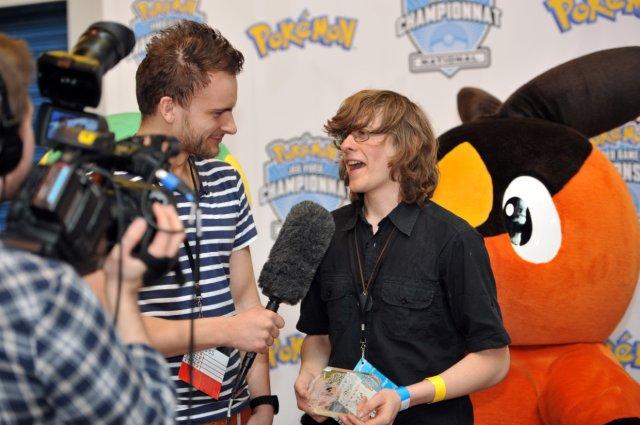
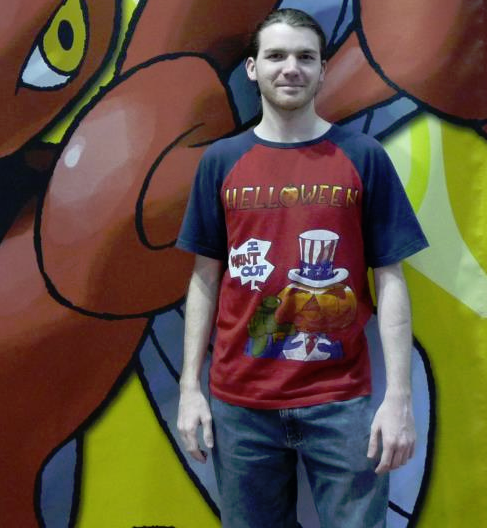


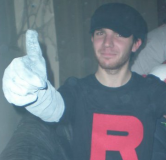
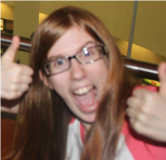
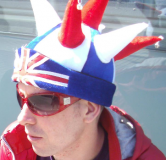
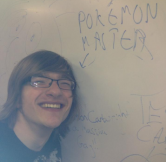
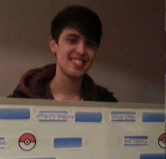
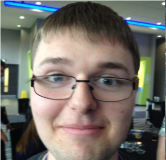

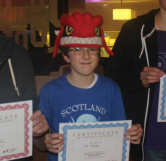

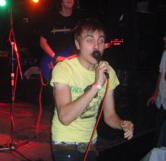














 / 5
/ 5








